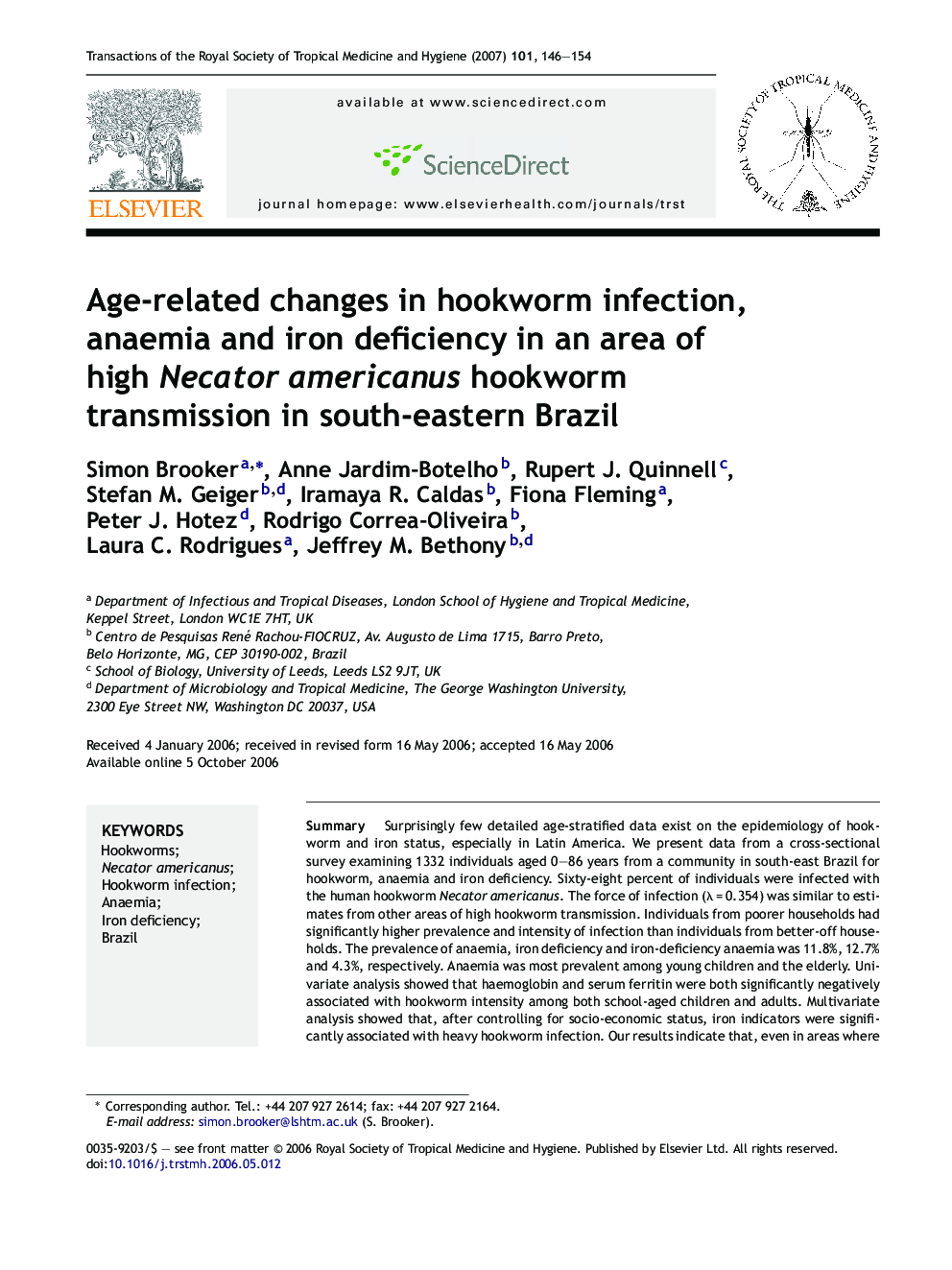| Article ID | Journal | Published Year | Pages | File Type |
|---|---|---|---|---|
| 3420955 | Transactions of the Royal Society of Tropical Medicine and Hygiene | 2007 | 9 Pages |
Abstract
Surprisingly few detailed age-stratified data exist on the epidemiology of hookworm and iron status, especially in Latin America. We present data from a cross-sectional survey examining 1332 individuals aged 0-86 years from a community in south-east Brazil for hookworm, anaemia and iron deficiency. Sixty-eight percent of individuals were infected with the human hookworm Necator americanus. The force of infection (λ = 0.354) was similar to estimates from other areas of high hookworm transmission. Individuals from poorer households had significantly higher prevalence and intensity of infection than individuals from better-off households. The prevalence of anaemia, iron deficiency and iron-deficiency anaemia was 11.8%, 12.7% and 4.3%, respectively. Anaemia was most prevalent among young children and the elderly. Univariate analysis showed that haemoglobin and serum ferritin were both significantly negatively associated with hookworm intensity among both school-aged children and adults. Multivariate analysis showed that, after controlling for socio-economic status, iron indicators were significantly associated with heavy hookworm infection. Our results indicate that, even in areas where there is a low overall prevalence of anaemia, hookworm can still have an important impact on host iron status, especially in school-aged children and the elderly.
Related Topics
Life Sciences
Immunology and Microbiology
Applied Microbiology and Biotechnology
Authors
Simon Brooker, Anne Jardim-Botelho, Rupert J. Quinnell, Stefan M. Geiger, Iramaya R. Caldas, Fiona Fleming, Peter J. Hotez, Rodrigo Correa-Oliveira, Laura C. Rodrigues, Jeffrey M. Bethony,
